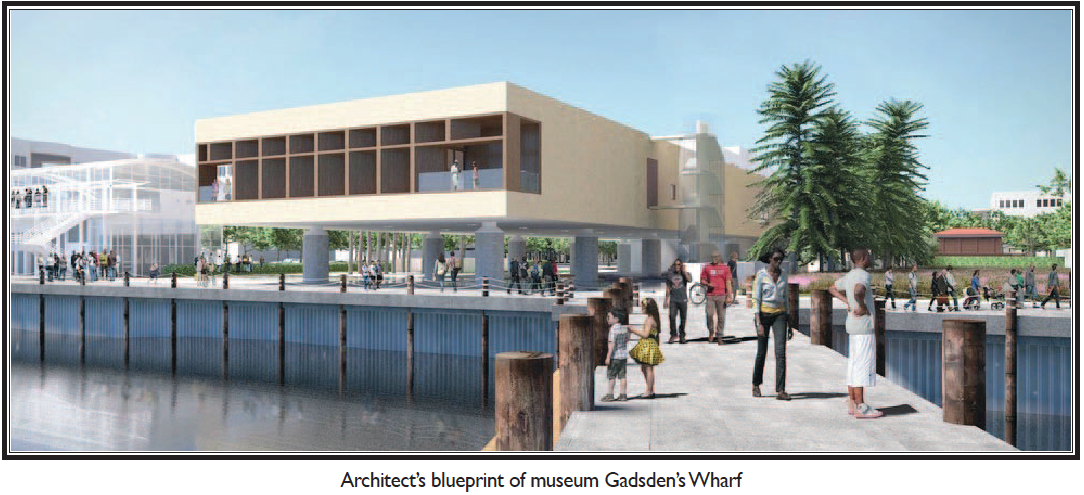Black Arts and Culture
Anticipation Heightens For 2021 Opening of Charleston Museum

By Rosaland Tyler
Associate Editor
New Journal and Guide
When the International African-American Museum opens in Charleston on Gadsden’s Wharf in 2021, the city will have a large number of sites that honor African-American history.
The proposed site, Gadsden’s Wharf is where 40 percent of percent of all people of color first stepped onto American soil wearing leg irons, according to historians. At least 100,000 slaves came through Charleston. Then the price for a human being ranged from $18 to $2,500 each. Historians believe nearly 90 percent of African Americans can trace their roots to Gadsden’s Wharf.
The museum reached its $75 million goal in August but announced a new $10 million fundraising campaign in December to cover rising construction costs impacted by higher tariffs. Earlier this year in February, Michael Boulware Moore, president, traveled to Sierra Leone aiming to bring back stones from Bunce Island for a memorial for the museum. That’s where thousands of Africans waited in line to exit Africa and enter America. The museum is scheduled to open in 2021.
“Our hope is that we can create it in such a way that people can actually reach out and touch these stones,” he said in a recent interview. “Thereby potentially touching something their last African ancestor touched some 200 years ago.”
The proposed museum is located about six miles from Mother “Emanuel” AME Church located at 110 Calhoun St. Founded in 1816, the Gothic Revival style church was set afire after the Denmark Vesey slave revolt in 1821 but rebuilt in 1834, the year all churches for parishioners of color were outlawed. It is the site where white supremacist Dylann Roof killed nine parishioners at a weekly Bible study class in 2015.
Nearby is the Medical University of South Carolina, which made history when Coretta Scott King, Andrew Young and others led African-American hospital workers on a 113-day strike in 1969.
Kress drugstore at 281 King St. is another historic site. Burke High School students inspired by Greensboro lunch counter sit-ins, sat down at segregated lunch counters at this site.
Black and white workers went on strike in 1944 at The Cigar Factory, 701 East Bay St. at Columbus Street. Striking employees sang the song “I Will Overcome,” which later would become the civil rights anthem.
Another historic site is the Philip Simmons’ Museum House, 30 1/2 Blake St., and Philip Simmons Gardens, between Anson and Menotti streets by St. John’s Reformed Episcopal Church, which celebrates the life of Charleston’s remarkable blacksmith.
Denmark Vesey monument in Hampton Park honors the carpenter who had purchased his freedom near the turn of the 19th century and, in 1822, attempted to organize a rebellion in an effort to liberate the city’s slaves.
The site of the Progressive Club, 3377 River Rd. on Johns Island, which once included a community center served as a base for activists Esau Jenkins and Septima Clark.
Middleton Place, Magnolia Plantation, Drayton Hall, Boone Hall Plantation, McCleod Plantation, sites where slaves labored in rice fields and helped make Charleston area planters rich.
There are other sites to see – the downtown Charleston site of the Jenkins Orphanage, which produced musicians that helped launch the jazz genre; the Avery Research Center, formerly the Avery Normal Institute and now a part of the College of Charleston, which houses an important archive devoted to African-American history; and the statue of J. Waties Waring at the federal courthouse, which celebrates the man whose dissenting opinion in the Briggs v. Elliott case paved the way for dismantling legal segregation.








